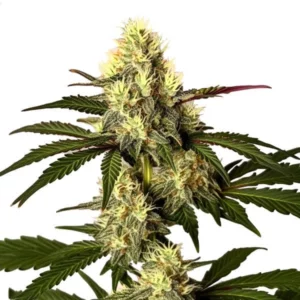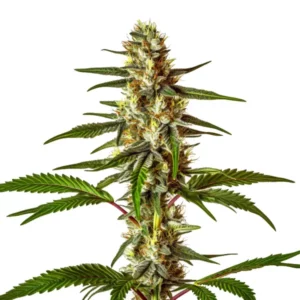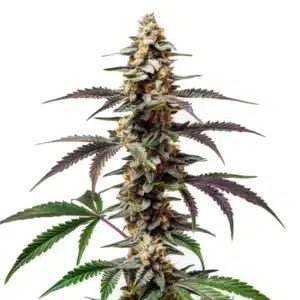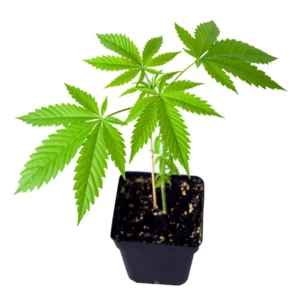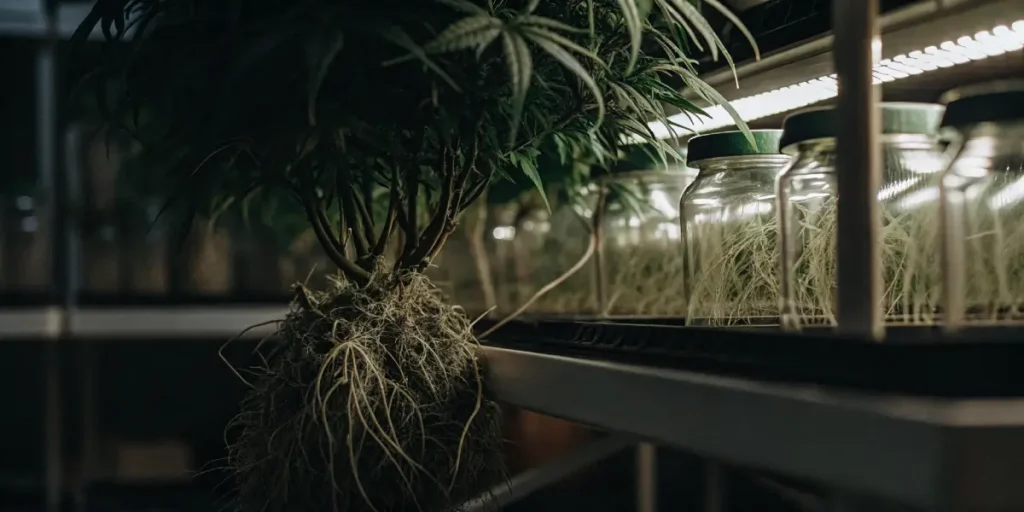
How Auxins Regulate Cannabis Root Development
Knowing how auxins regulate cannabis root development is essential for any grower. Auxins are powerful plant hormones that play a crucial role in guiding root growth direction and promoting the formation of lateral roots. This results in a more robust root system, which is essential for absorbing nutrients and water efficiently.
Cannabis plants rely on auxins to determine how their roots spread and branch. These hormones ensure roots grow downward by influencing cell elongation. For novice growers, knowing how auxins regulate cannabis root development can make a significant difference in the health of your plants.
Recommended Strains
Do Si Dos
|
|
THC | 26% - 30% (High) |
|
|
Type | Feminized |
|
|
Yield | Medium |
|
|
Phenotype | 65% Indica / 35% Sativa |
Do-Si-Dos Fast Version
|
|
THC | 26% - 30% (High) |
|
|
Type | Fast Flowering |
|
|
Yield | Medium |
|
|
Phenotype | 70% Indica / 30% Sativa |
Auxins not only affect the length of the roots but also their architecture. This means they determine the overall shape and structure of the root system. A well-developed root system can support larger, healthier cannabis plants. Strains like Peyote WiFi benefit greatly from a strong root structure, leading to a more resilient plant.
Effects of Auxins on Cannabis Root Growth
The effects of auxins on cannabis root growth are profound. These hormones stimulate growth in areas where the roots need to expand. By concentrating where growth is needed most, auxins help create a dense network of roots that improve plant stability and nutrient uptake.
Auxins also play a critical role in healing and repairing damaged roots. If a plant experiences stress or physical damage, auxins can help redirect growth to mend and strengthen those areas. This repair mechanism is vital for maintaining the plant’s overall health and productivity.
Moreover, auxins influence how roots adapt to environmental changes. In varying soil conditions, auxins help roots seek out nutrients and water, ensuring the plant can thrive even when external conditions are less than perfect. By knowing the effects of auxins on cannabis root growth, growers can adapt their practices to optimize plant health.
In addition to their role in root repair, auxins also facilitate root adaptation mechanisms. When a cannabis plant is subjected to different stressors, auxins can direct root growth to mitigate these stresses, enhancing the plant’s resilience. This adaptive capability is crucial for growers looking to maximize yields in diverse growing environments.
Auxin Influence on Cannabis Root Architecture
The influence of auxins on root architecture is particularly fascinating. By guiding the growth direction, auxins ensure that the roots explore the soil efficiently. This exploration allows the plant to access water and nutrients from a broader area, enhancing its growth potential.
Auxins are responsible for initiating lateral root formation. These side roots are crucial for creating a strong foundation. For example, the Bruce Banner Auto strain benefits from this, as a robust root system supports its rapid growth cycle.
Additionally, auxins affect the density and distribution of roots within the soil. By influencing root architecture, auxins help optimize the plant’s ability to absorb nutrients, making them vital in areas with poor soil fertility. Knowing the auxin influence on cannabis root architecture is key to cultivating robust plants.
The impact of auxins extends to root hair development, which further enhances the plant’s ability to absorb water and nutrients. This intricate role of auxins in cannabis root architecture ensures that the plant can sustain its growth and maintain health, even in challenging conditions. By leveraging this knowledge, growers can strategically manage their cultivation practices.
Promos & Deals
Auxins and Cannabis Root Branching
Auxins are integral to how cannabis roots branch. They determine where new roots will form and how they will spread. This branching is vital for efficient water and nutrient uptake, as it increases the surface area of the root system.
For strains like Gelato, effective root branching can lead to improved overall plant health and larger yields. By ensuring the roots branch properly, these plants can thrive even in less-than-ideal soil conditions.
Branching is particularly important for maximizing the plant’s access to resources. Auxins and cannabis root branching work together to ensure that roots can effectively navigate through the soil, exploring new areas and reinforcing the plant’s stability. This enables cannabis plants to maintain optimal health and productivity.
The function of auxins in cannabis root development also involves mediating the plant’s response to environmental signals. By influencing how roots branch and grow, auxins enable the plant to adapt to changing conditions, ensuring consistent growth and yield. This adaptability is crucial for successful cannabis cultivation.
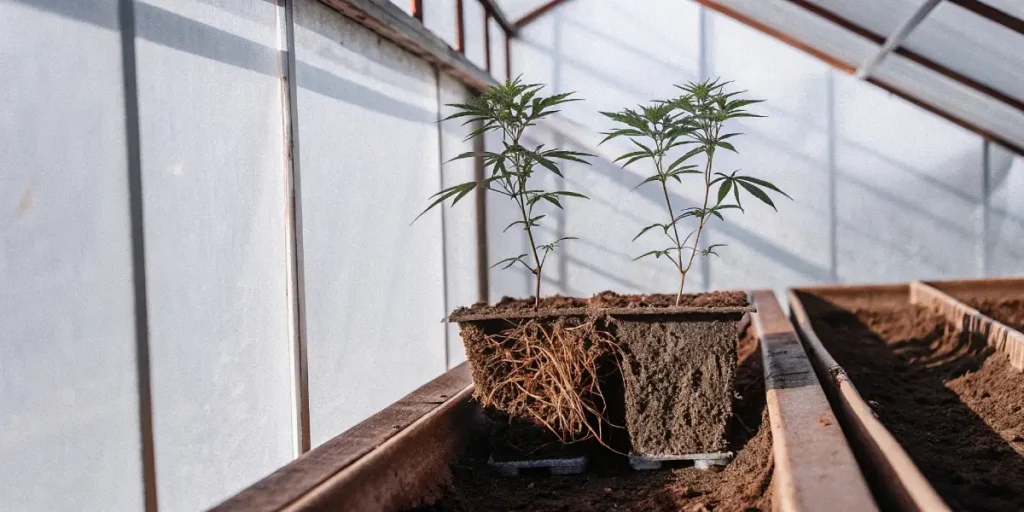
Auxin Concentration Impact on Cannabis Roots
The concentration of auxins in the plant can significantly impact root development. High concentrations can increase root length but may inhibit lateral root formation. Finding the right balance is key to promoting a well-rounded root system.
Growers can manage auxin levels through various techniques. For example, using specific types of fertilizers or plant hormones can adjust auxin concentrations. This adjustment allows for tailored root development suited to particular growing conditions.
Moreover, knowing auxin concentration impact on cannabis roots helps growers fine-tune their approach for each strain. Different strains may require distinct auxin levels for optimal root development, highlighting the importance of customized cultivation strategies.
Adjusting auxin concentrations also allows for targeted interventions in the case of root disorders. By manipulating auxin levels, growers can encourage specific growth patterns, facilitating recovery from stress or damage and promoting overall plant vitality.
Practical Tips for Managing Auxins in Cannabis Cultivation
Managing auxins effectively can be a game-changer for cannabis cultivation. Here are some practical tips to harness auxins for better root development:
- Use rooting hormones when planting new seeds or cuttings. This can kickstart root growth by boosting auxin levels.
- Prune roots carefully to encourage lateral growth. This stimulates auxin activity, promoting a more extensive root network.
- Monitor soil pH and nutrient levels. Imbalances can affect auxin production and activity.
- Provide adequate water and light to ensure healthy auxin distribution throughout the plant.
- Experiment with different cannabis strains, like Bruce Banner Auto, to observe how varying auxin levels affect root development.
By incorporating these strategies, both novice and experienced growers can enhance their cannabis plants’ root systems. A focus on auxins can lead to healthier plants and more bountiful yields.
Besides , regularly evaluate the plant’s growth environment to ensure optimal auxin performance. Environmental factors such as light intensity and temperature can influence auxin activity, impacting how auxins regulate cannabis root development. Fine-tuning these conditions can significantly improve outcomes.
Knowing the function of auxins in cannabis root development empowers growers to make informed decisions. By continuously adapting cultivation practices and embracing new techniques, growers can maximize the potential of their cannabis crops, ensuring robust growth and abundant harvests.
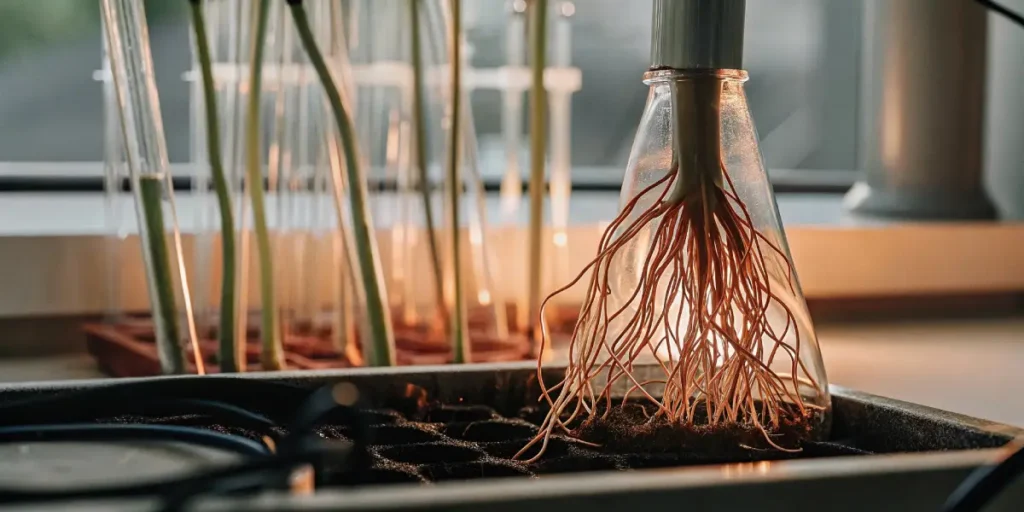
FAQs About how auxins regulate cannabis root development
What are auxins, and how do they affect cannabis root growth?
Auxins are plant hormones that regulate various growth processes, including root development. In cannabis, they promote cell elongation, allowing roots to grow longer and stronger. Auxins also guide the direction of root growth, ensuring the plant can access nutrients and water efficiently.
By knowing how auxins regulate cannabis root development, growers can optimize their cultivation practices. Proper auxin management can lead to healthier plants with more extensive root systems, supporting better nutrient uptake and plant stability.
The effects of auxins on cannabis root growth extend to influencing how roots respond to environmental stimuli. This responsiveness is crucial for plants to adapt to new conditions and maintain their growth rates. Mastering auxin management can significantly impact the success of cannabis cultivation.
Auxins also play a pivotal role in the plant’s ability to recover from stress. By promoting root growth in specific areas, auxins enable the plant to repair damage and optimize nutrient uptake, further emphasizing their importance in successful cannabis cultivation.
How can I enhance auxin activity in my cannabis plants?
Enhancing auxin activity involves creating an environment that supports their production and function. Use rooting hormones when planting seeds or cuttings to boost initial root growth. Maintain optimal soil conditions, as pH and nutrient levels can impact auxin activity.
Pruning roots can also stimulate auxin production, encouraging lateral root growth. This results in a more robust and efficient root system, vital for plant health and yield. Experimenting with different strains, like those offered by Blimburn Seeds, can provide insights into how auxins influence growth.
Ensuring consistent environmental conditions can also enhance auxin activity. Factors such as light availability and moisture levels are vital for maintaining active auxin function, helping to regulate how auxins promote cannabis root development.
Utilizing growth-promoting substances in conjunction with auxins can further boost root development. These substances can interact synergistically with auxins, enhancing their effects on root growth and architecture, leading to healthier and more productive plants.
Do all cannabis strains respond the same way to auxins?
No, cannabis strains can respond differently to auxins. Some may exhibit rapid root growth, while others develop more branching. Factors like genetics, growing conditions, and auxin concentration all play a role in these variations.
By experimenting with different strains from Blimburn Seeds, such as Peyote WiFi or Gelato, growers can observe how auxins influence root development. This knowledge helps tailor cultivation practices to each strain’s needs.
Additionally, knowing strain-specific responses to auxins allows growers to optimize their resources. By tailoring auxin management to each strain, growers can achieve more efficient root development and, consequently, more robust plant growth.
Strains with different growth rates and structures may require unique auxin concentrations for optimal performance. Recognizing these differences is essential for maximizing the benefits of auxins in cannabis cultivation, ensuring each strain reaches its full potential.
What is the impact of auxin concentration on cannabis root architecture?
The concentration of auxins can significantly shape the root architecture. High levels may enhance root length but reduce lateral growth. Conversely, lower concentrations might result in more branching but shorter roots.
Finding the right balance of auxin concentration is crucial for developing a healthy root system. Growers can adjust auxin levels by using specific fertilizers or growth techniques, ensuring their plants achieve optimal growth conditions.
Knowing the auxin concentration impact on cannabis roots aids in preventing potential growth issues. By adjusting concentrations, growers can avoid common problems such as stunted growth or poor nutrient uptake, leading to healthier plants.
Additionally, monitoring and managing auxin concentrations can help mitigate environmental stress impact. By fine-tuning auxin levels, growers can ensure that plants remain resilient, maintaining their growth and productivity despite challenging conditions.
Can auxins help my cannabis plants recover from root damage?
Yes, auxins play a vital role in root recovery. When roots are damaged, auxins can redirect growth to repair and strengthen the affected areas. This repair process is crucial for maintaining overall plant health and productivity.
By knowing how auxins regulate cannabis root development, growers can implement practices to support recovery. Proper care, including adequate watering and nutrient management, can enhance auxin effectiveness, leading to resilient plants.
The function of auxins in cannabis root development extends to promoting new growth in damaged areas. This growth not only repairs but also fortifies the root system, preventing future damage and ensuring sustained health.
Additionally, auxins can improve the plant’s stress tolerance, helping it to withstand adverse conditions more effectively. By leveraging auxins in recovery strategies, growers can ensure their cannabis plants remain productive and healthy throughout their lifecycle.


